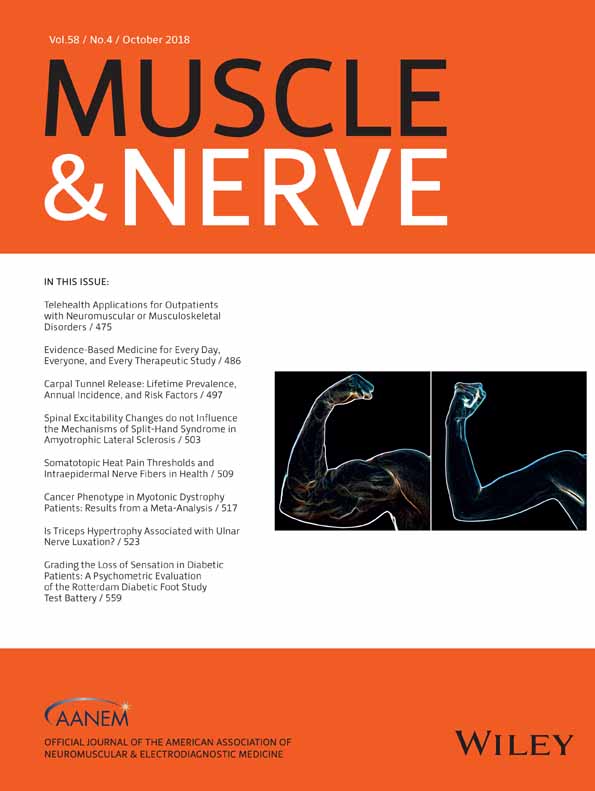Fatty infiltration evaluation and selective pattern characterization of lower limbs in limb-girdle muscular dystrophy type 2A by muscle magnetic resonance imaging
Funding: This study was supported by the talent training program in the Shanghai Jing'an district (JWRC2014D04), Science and Technology Commission of Shanghai Municipality (15DZ1208002), and the National Key Research and Development Program of China (2016YFC0901504).
Conflict of interest: None of the authors have any conflicts of interest to disclose.
ABSTRACT
Introduction
Limb-girdle muscular dystrophy type 2A (LGMD2A) is characterized by progressive wasting of muscles for which the disease-monitoring tools are still deficient.
Methods
We performed muscle MRI of the lower limbs in 32 LGMD2A patients and 21 controls. The modified Mercuri scale was employed to evaluate the degree of fatty infiltration.
Results
Severe fatty infiltration in the long head of biceps femoris (modified Mercuri scale 3.99) and sparing of extensor digitorum longus (modified Mercuri scale 0.17) were observed. The sensitivity and specificity of this pattern in diagnostic testing was 76.00% and 90.48%, respectively. A comprehensive clinical and MRI evaluation revealed that progressive fatty infiltration in the upper leg correlated well with disease progression, but neither calf involvement nor muscle strength deterioration showed a good correlation.
Discussion
The selective involvement pattern is potentially useful for LGMD2A diagnosis. Upper leg muscle MRI is a sensitive evaluation method for monitoring disease progression. Muscle Nerve 58: 536–541, 2018




